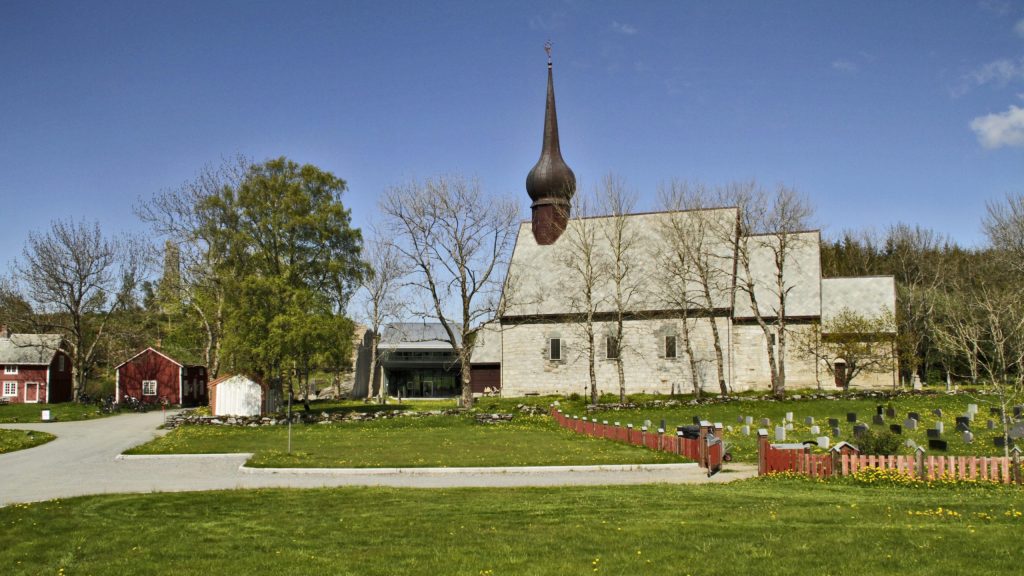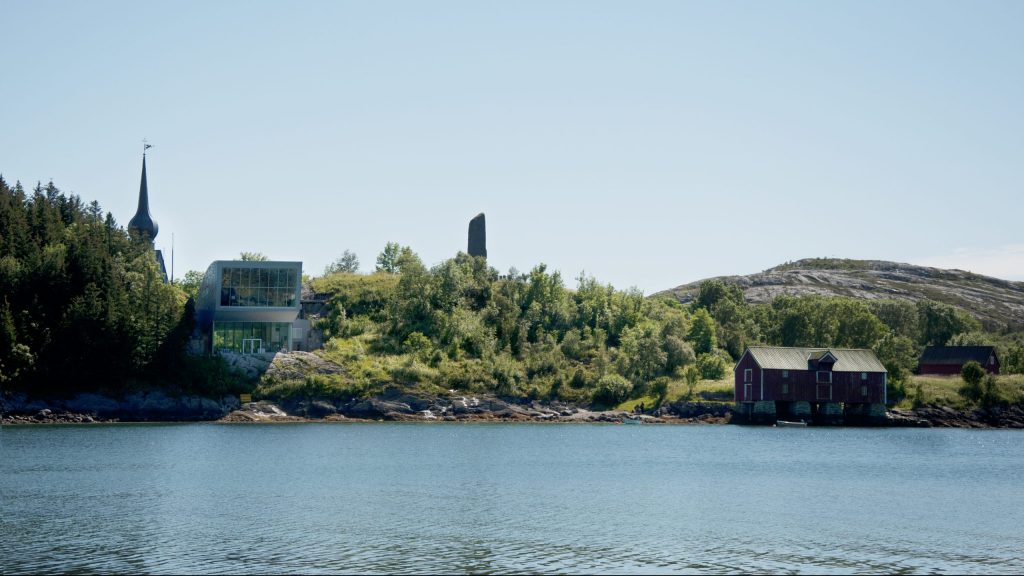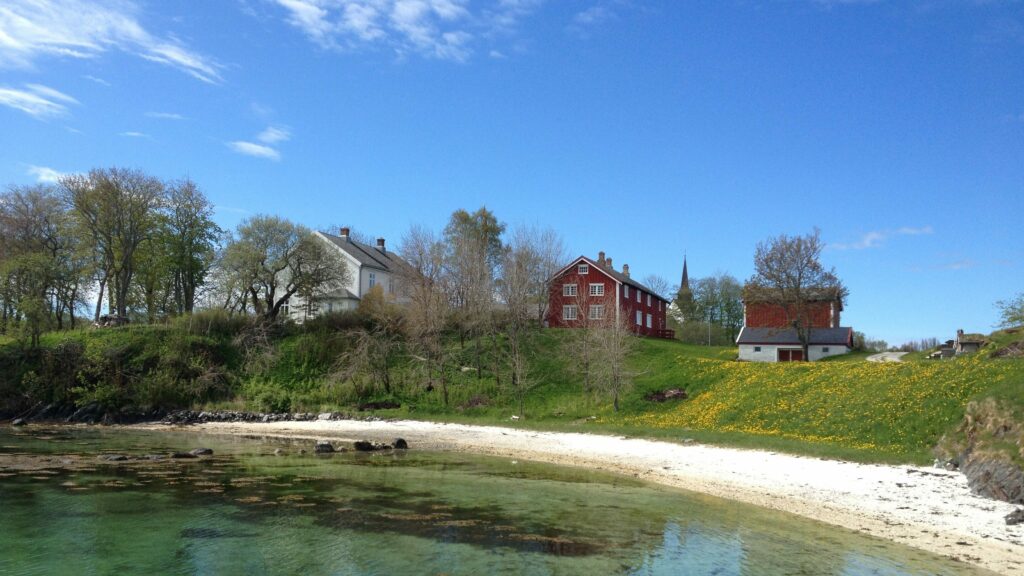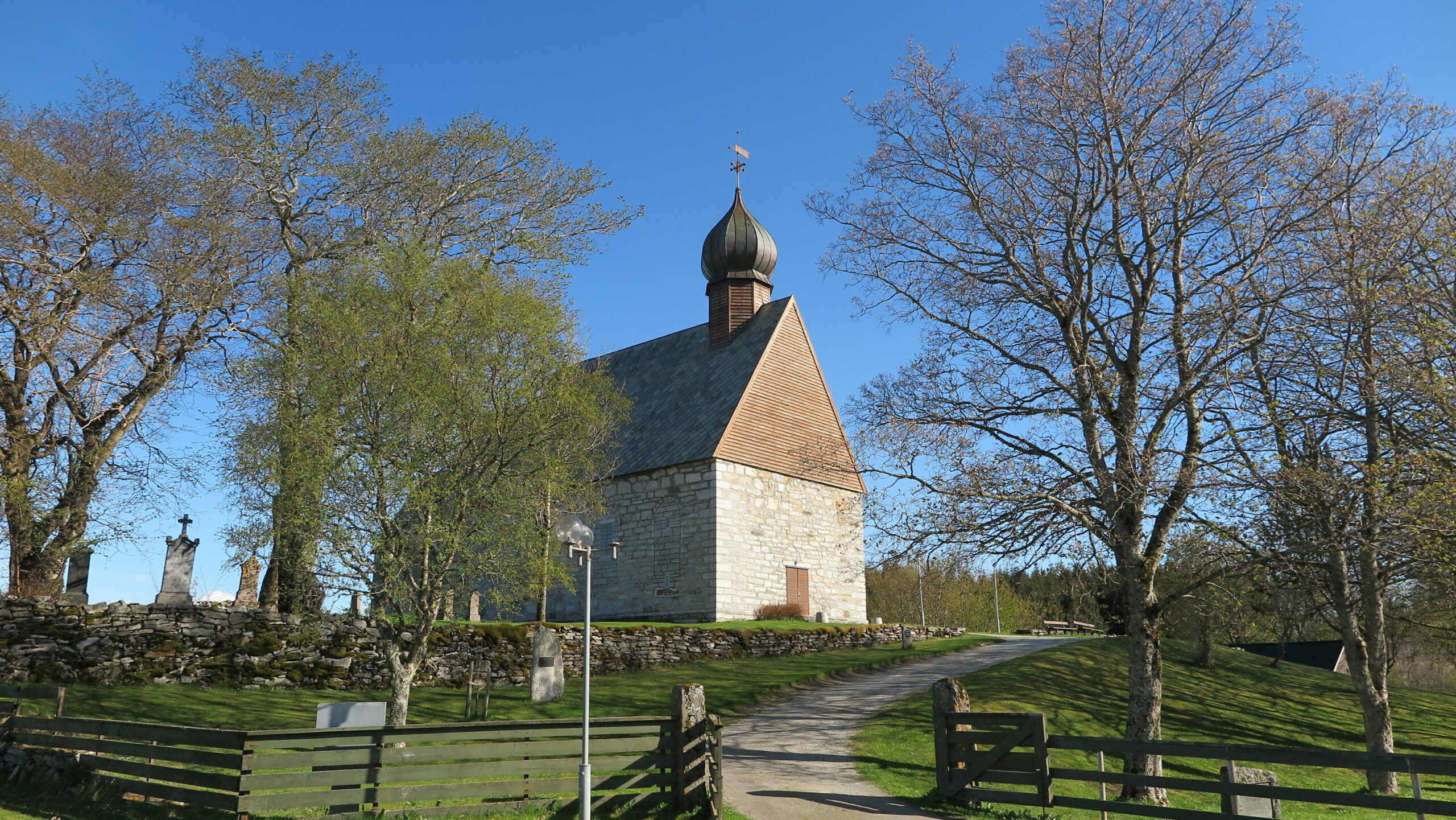The medieval churches of Helgeland
 Tore Schöning Olsen
Tore Schöning Olsen
Amongst the many beautiful churches in Helgeland are the three medieval churches that are particularly interesting: Dønnes church, Herøy church and Alstahaug church.
Alstahaug church
 Petter Dass-museet
Petter Dass-museet
Alstahaug church was built in the Romanesque style and dates back to the Middle Ages. Its closest neighbour is the Petter Dass Museum, which celebrates Northern Norway’s 17th-century poet-priest. Petter Dass served as a priest at Alstahaug from 1689 until he died in 1707.
Judging from the style and construction, the oldest part of the church was built sometime around the year 1200. Alstahaug church has since been expanded, refurbished, and most recently in the 1960s, when most of the church was restored to its original style. There are daily tours of the church and the surrounding historical area in the summer season. During the rest of the year, tours are by appointment.
Right by the church is a 2-km trail through the nearby scenery, with beautiful views. It’s perfect for a relaxed stroll or family walk. At Alstahaug, in addition to the Petter Dass Museum, you can often see interesting exhibitions and cultural events throughout the year. The museum shop is well worth a visit, and Margrethe’s Café offers a menu of traditional food from Helgeland. There is also a library. For more information, please see the Petter Dass Museum’s website.
Herøy church – “the Helgeland Cathedral”
 Kim Astrup
Kim Astrup
Herøy church, also known as ”The Helgeland Cathedral”, is a soapstone church from the 12th century. This is the only church north of Trondheim with an apse, a semicircular recess where the altar stands. Amongst its notable cultural treasures are the pulpit and altarpiece, which date from the 1760s.
The church has undergone several changes, most recently in the 1960s, when extensive changes were made and additions were built. Herøy church has several characteristics in common with two other medieval churches in Helgeland: Alstahaug and Dønnes.
Dønnes church

The mediaeval church, built of soapstone in the 13th century, has distinctive architecture and decorations. It also has Norway’s largest and best-preserved burial chamber, dating from the 17th century. Next door is Dønnes Gård, a vicarage with a colourful history.
Dønnes Gård offers guided tours several times a day in the summer, and throughout the year on request. The vicarage also has a lunch and dinner menu based on locally-sourced ingredients, served in elegant surroundings.
From the churchyard there is a nature and culture trail that leads to the top of Dønnesfjellet (128 m). The walk takes about 20 minutes. Despite its modest height, the summit offers a spectacular panorama of the Helgeland coast, spanning from the Vega archipelago and the town of Brønnøysund in the south to the islands of Lovund and Træna to the north. In clear weather, you might even be able to see the distant peaks of the Lofoten Islands as a thin stripe on the horizon.
Dønnes church is believed to have been built in the 13th century on the site of an even older church. Originally, this was a private chapel for the local estate, Dønnesgodset. The wealthy owners established the burial chamber in the church; the 22 coffins in the chamber and the private cemetery outside the church tell the story of the Tønder and Coldevin families.

